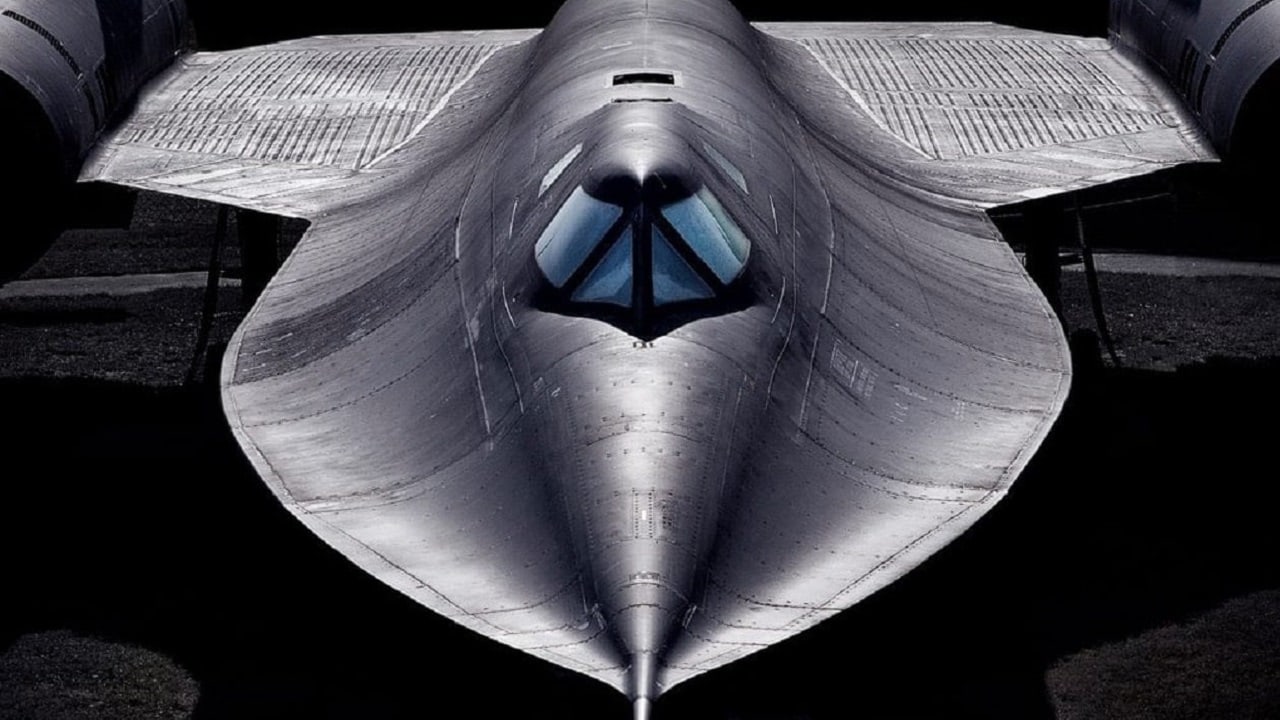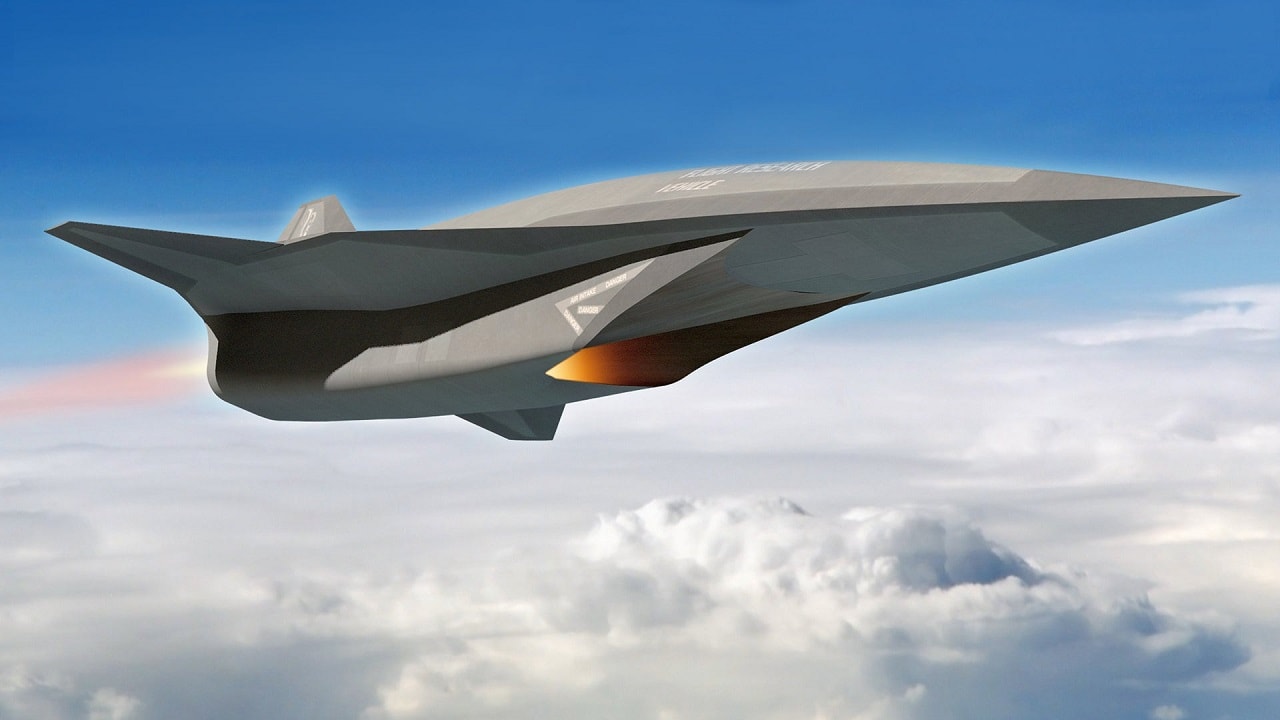Summary and Key Points: Lockheed Martin’s SR-72 “Darkstar,” successor to the legendary SR-71 Blackbird, promises unprecedented speed and capability.
-Expected to reach Mach 6+ (over 4,600 mph), it combines turbofan and dual-mode scramjet propulsion.
-Despite technical challenges, including extreme heat requiring advanced ceramic-carbon composite materials, the SR-72 will outmatch the SR-71’s Mach 3.5 speed. The Darkstar’s revolutionary engines and design render stealth unnecessary, relying instead on sheer velocity.
-Though kept secretive, Lockheed’s hints suggest a breakthrough. The Darkstar could fundamentally redefine intelligence, surveillance, and reconnaissance, achieving global reach in minutes, thus becoming a game-changer in modern aviation warfare.
Those 4 Words: Better Than SR-71 Blackbird
Why the SR-72 will be far superior to the SR-71
Lockheed Martin’s super-secretive Skunk Works is actively working on a super-secretive aircraft, the SR-72 Darkstar. And despite going over budget by just a smidgen ($335 million), the Darkstar seems ever closer to reality.
Kelly Johnson, the man behind Skunk Works, is a legend in the aircraft industry. He is akin to what John M. Browning was to arms designers. They have been working on a Mach 6+ intelligence, surveillance, reconnaissance, and strike aircraft for the SR-72. This aircraft utilizes advanced turbine-based combined cycle engines, allowing unprecedented speed and global reach within minutes.
The Darkstar is the successor to the SR-71 Blackbird, which some aviation experts call the “Son of a Blackbird, or SOB.” New production facilities at the Skunk Works lead many to believe that either production has already begun or soon will for the Darkstar. Yes, it is coming.
But what kind of engine will power the Darkstar?
SR-72: The Engine Riddle is Solved?
In June 2017, Lockheed Martin’s executive vice president and general manager for Skunk Works, Rob Weiss, told the media that testing was complete on the turbine-based combined cycle hypersonic propulsion system for the SR-72 and that they were “getting close” to beginning work on what he described as an SR-72 Flight Research Vehicle (FRV).
This single-engine technology demonstrator was said to be “about the size of an F-22 Raptor” and was meant to demonstrate the platform’s ability to take off under conventional turbofan power, accelerate up to supersonic speeds, and then transition from turbofan power to a much more exotic dual-mode scramjet that would allow the aircraft to achieve maximum speeds well above Mach 6.
“Hypersonic aircraft, coupled with hypersonic missiles, could penetrate denied airspace and strike at nearly any location across a continent in less than an hour,” Brad Leland, Lockheed Martin’s hypersonics manager, said in a Lockheed Martin press release that has since been taken down.
“Speed is the next aviation advancement to counter emerging threats in the next several decades. The technology would be a game-changer in theater, similar to how stealth is changing the battlespace today.”
The Airframe Has Challenges
The SR-72’s airframe will get Space Shuttle hot when going at Mach 6+, and it must withstand those temperatures. Traveling at Mach 6 or 4,603.61 mph will generate tremendous heat for the airframe.
Maya Carlin wrote recently, “At speeds greater than Mach 5.0, the resulting high temperatures can melt conventional metallic airframes. To rectify this, engineers are researching alternate composites including high-performance ceramic, carbon, and metal mixes.” The heat would reach more than 500 degrees Fahrenheit on the aircraft’s external surfaces.
Stealth Surfaces are a no-go on the SR-72, as the high heat would burn them away quickly. The aircraft would have an enormous heat signature, negating the stealth coatings regardless. So, how would the Darkstar move across continents?
“I Feel The Need, The Need For Speed”
The speed generated by conventional turbofan power accelerates up to supersonic speeds. Then, the aircraft transitions from turbofan power to a much more exotic dual-mode scramjet, allowing the aircraft to achieve speeds in excess of Mach 5 or 6. This would protect the aircraft without any stealth features.

SR-71 Blackbird Spy Plane. Image Credit: Creative Commons.
During its unparalleled run as the best spy aircraft in the world, the SR-71 was fired at by more than 4,000 missiles, none of which hit it. The Blackbird could fly at Mach 3.56 (2,731.478 mph).
The original SR-71 was powered by the Pratt & Whitney J58 turbojet engine, which aviation experts often call a “turboramjet.” The Darkstar’s engine will have to be even more powerful to meet the airframe’s expectations.
Lockheed Lets The Cat Out of the Bag … Sort of
In 2023, Lockheed posted on Twitter or “X” that set tongues wagging.
The first, with an image of the SR-71, reads, “The SR-71 Blackbird is still the fastest acknowledged crewed air-breathing jet aircraft,” implying there is an even faster aircraft out there.
Another tweet, posted to celebrate the success the latest Top Gun film enjoyed, featured an image of the high-speed aircraft featured in that film. Interestingly, Lockheed Martin said, “To celebrate, we are sharing some Maverick-worthy images of real aircraft.”
Life Imitating Art? Wait, What?
Alex Hollings tells a great story about Top Gun Maverick that was so good that it even fooled China. The experimental aircraft that Tom Cruise is flying at the beginning of the film looks incredibly realistic, which left some questioning whether the film producers actually had an SR-72 in the film.
“The reason it looks so real is because it was the engineers from Skunk Works who helped us design it,” the film’s director, Joseph Kosinski, told Sandboxx News before the movie’s opening. “So those are the same people who are working on real aircraft who helped us design Darkstar for this film.”
But the story gets better. According to Jerry Bruckheimer, the resultant mockup was so good (hey, it was designed by Skunk Works) that it fooled the Chinese. “The Navy told us that a Chinese satellite turned and headed on a different route to photograph that plane. They thought it was real. That’s how real it looks,” Bruckheimer first told Sandboxx News.
The Darkstar may not end up looking anything remotely like the mockup in Top Gun: Maverick. But it just makes the waiting for it to make its first appearance even more enticing. US aviation lovers can’t wait. The aircraft is supposed to make its first flight sometime this year. Or has it already flown?
Either way, the Darkstar is going to make the Blackbird proud.
About the Author:
Steve Balestrieri is a 19FortyFive National Security Columnist. He served as a US Army Special Forces NCO and Warrant Officer. In addition to writing for 19FortyFive, he covers the NFL for PatsFans.com and is a member of the Pro Football Writers of America (PFWA). His work was regularly featured in many military publications.

